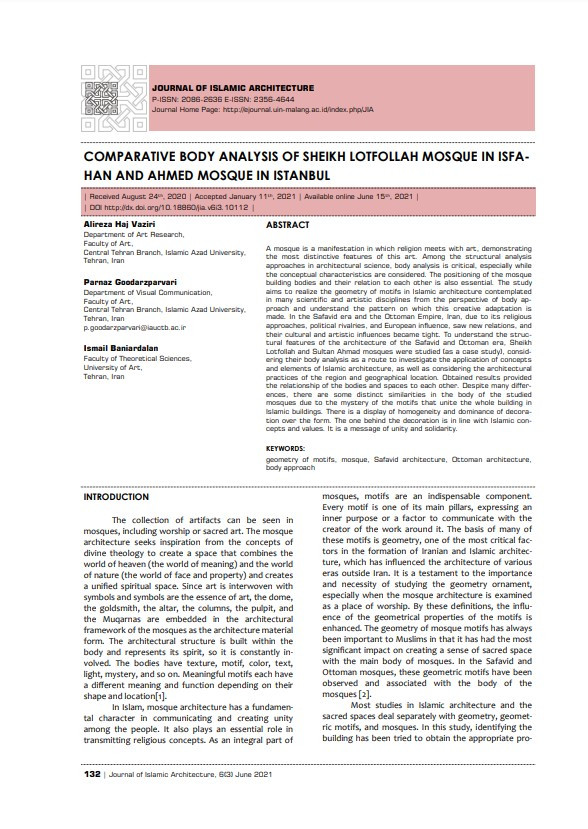
A mosque is a manifestation in which religion meets with art, demonstrating the most distinctive features of this art. Among the structural analysis approaches in architectural science, body analysis is critical, especially while the conceptual characteristics are considered. The positioning of the mosque building bodies and their relation to each other is also essential. The study aims to realize the geometry of motifs in Islamic architecture contemplated in many scientific and artistic disciplines from the perspective of body approach and understand the pattern on which this creative adaptation is made. In the Safavid era and the Ottoman Empire, Iran, due to its religious approaches, political rivalries, and European influence, saw new relations, and their cultural and artistic influences became tight. To understand the structural features of the architecture of the Safavid and Ottoman era, Sheikh Lotfollah and Sultan Ahmad mosques were studied (as a case study), considering their body analysis as a route to investigate the application of concepts and elements of Islamic architecture, as well as considering the architectural practices of the region and geographical location. Obtained results provided the relationship of the bodies and spaces to each other. Despite many differences, there are some distinct similarities in the body of the studied mosques due to the mystery of the motifs that unite the whole building in Islamic buildings. There is a display of homogeneity and dominance of decoration over the form. The one behind the decoration is in line with Islamic concepts and values. It is a message of unity and solidarity.
I agree to the terms outlined below:
You agree to upload and assign Mosqpedia Database the rights to use the content worldwide and in perpetuity across all current and future media platforms. Mosqpedia Database may edit, copy, adapt and translate your contribution.
The content will be distributed under the Creative Commons Attribution-Deed – Attribution-NonCommercial-NoDerivatives 4.0 International – Creative Commons
All data will be stored in line with data protection regulations.